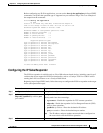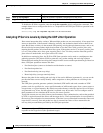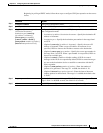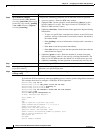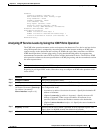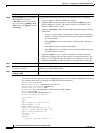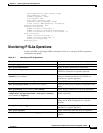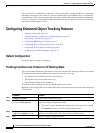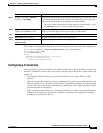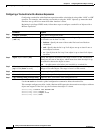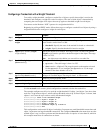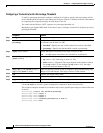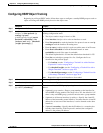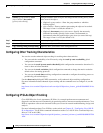
CHAPTER
46-1
Catalyst 3750-X and 3560-X Switch Software Configuration Guide
OL-21521-01
46
Configuring Enhanced Object Tracking
This chapter describes how to configure enhanced object tracking on the Catalyst 3750-X or 3560-X
switch. This feature provides a more complete alternative to the Hot Standby Routing Protocol (HSRP)
tracking mechanism. which allows you to track the line-protocol state of an interface. If the line protocol
state of an interface goes down, the HSRP priority of the interface is reduced and another HSRP device
with a higher priority becomes active. The enhanced object tracking feature separates the tracking
mechanism from HSRP and creates a separate, standalone tracking process that can be used by processes
other than HSRP. This allows tracking other objects in addition to the interface line-protocol state. A
client process, such as HSRP, can register an interest in tracking objects and request notification when
the tracked object changes state.This feature increases the availability and speed of recovery of a routing
system and decreases outages and outage duration.
Note Enhanced object tracking is not supported on switches running the LAN base feature set.
Unless otherwise noted, the term switc
h refers to a Catalyst 3750-X or 3560-X standalone switch and to
a Catalyst 3750-X switch stack.
For more information about enhanced object tracking and the
commands used to configure it, see this
URL:
http://www.cisco.com/en/US/products/sw/iosswrel/
ps1839/products_feature_guide09186a00801541be.
html
The chapter includes these se
ctions:
• Understanding Enhanced Object Tracking, page 46-1
• Configuring Enhanced Object Tracking Features, page 46-2
• Monitoring Enhanced Object Tracking, page 46-12
Understanding Enhanced Object Tracking
Each tracked object has a unique number that is specified in the tracking command-line interface (CLI).
Client processes use this number to track a specific object. The tracking process periodically polls the
tracked object for value changes and sends any changes (as up or down values) to interested client
processes, either immediately or after a specified delay. Several clients can track the same object, and
can take different actions when the object changes state.



